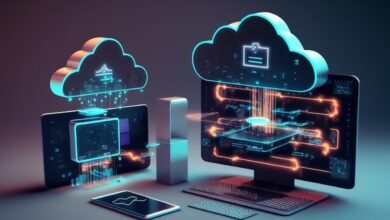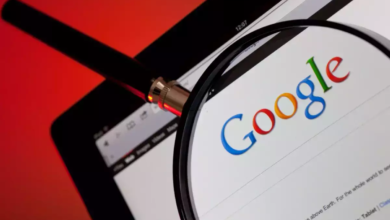
Technology trends are rapidly evolving, and it is essential to keep up with the latest Tech Trends to remain relevant in today’s digital world. The year 2023 promises to be an exciting time for tech enthusiasts and professionals alike. In this article, we will discuss ten tech trends to watch out for in 2023. From the rise of artificial intelligence to the emergence of new technologies, these trends will shape the future of tech.
The Tech Trends industry is constantly evolving, and 2023 is expected to be an exciting year for tech enthusiasts. From AI to blockchain technology, these trends will shape the future of tech. In this article, we will discuss ten tech trends to watch out for in 2023.
The Rise of Artificial Intelligence (AI)
AI has been around for a while now, but it is expected to make significant progress in 2023. AI-powered systems are becoming more sophisticated, and we can expect to see more applications of AI in various industries, such as healthcare, finance, and transportation. AI will also be more prevalent in our everyday lives, from personal assistants to smart homes.
The Internet of Things (IoT)
The IoT is the interconnectivity of devices, vehicles, buildings, and other objects with embedded electronics, software, sensors, and network connectivity. IoT devices are already prevalent in our daily lives, from smart thermostats to fitness trackers. In 2023, we can expect to see more advanced IoT devices, such as smart cities, self-driving cars, and intelligent transportation systems.
Blockchain Technology
Blockchain technology has gained popularity in recent years due to its use in cryptocurrencies. However, its potential goes far beyond digital currencies. In 2023, we can expect to see more applications of blockchain technology, such as supply chain management, healthcare, and voting systems.
5G Technology

5G is the fifth generation of mobile networks, and it promises faster download and upload speeds, lower latency, and more reliable connections. In 2023, we can expect to see more widespread adoption of 5G technology, which will enable new use cases such as autonomous vehicles, smart factories, and remote surgeries.
Augmented and Virtual Reality (AR/VR)
AR and VR technologies have been around for a while, but they are expected to become more mainstream in 2023. AR and VR will be more prevalent in various industries, such as education, entertainment, and healthcare. We can expect to see more immersive AR/VR experiences in gaming, training, and simulation.
Read More: New iOS Tech Makes It Super Hard to Hack Your iCloud Login
Quantum Computing
Quantum computing is a type of computing that uses quantum-mechanical phenomena, such as superposition and entanglement, to perform operations on data. In 2023, we can expect to see more advancements in quantum computing, which will enable faster and more efficient processing of large datasets.
Edge Computing
Edge computing is a type of computing that processes data closer to the source, rather than sending it to a central server for processing. Edge computing enables faster processing and lower latency, making it ideal for applications such as autonomous vehicles, drones, and IoT devices.
Read More: Tech Trends to Look Out for in 2023
Robotics and Automation
Robotics and automation have been around for a while, but they are expected to make significant progress in 2023. We can expect to see more advanced robots and automated systems in various industries.
such as manufacturing, healthcare, and logistics. Robotics and automation will also lead to job displacement, which will require new skills and training for the workforce.
Cybersecurity

As more devices become connected to the internet, the risk of cyber-attacks increases. In 2023, we can expect to see more advanced cybersecurity measures, such as biometric authentication and decentralized identity systems. Companies must also focus on data privacy and protection, as data breaches can have severe consequences for both businesses and consumers.
Conclusion
The year 2023 promises to be an exciting time for tech enthusiasts, as we will witness the emergence of new technologies and the advancement of existing ones. From AI to blockchain, these tech trends will shape the future of various industries and our daily lives. However, with new technologies come new challenges, such as job displacement and cybersecurity risks, which we need to address proactively.
FAQs
What is AI, and how will it impact our lives in 2023?
AI is the simulation of human intelligence processes by computer systems. In 2023, we can expect to see more applications of AI in various industries, such as healthcare, finance, and transportation, and it will also be more prevalent in our everyday lives.
What is the IoT, and how will it change how we live?
The IoT is the interconnectivity of devices, vehicles, buildings, and other objects with embedded electronics, software, sensors, and network connectivity. In 2023, we can expect to see more advanced IoT devices, such as smart cities, self-driving cars, and intelligent transportation systems, which will change how we live.
- What is blockchain technology, and how will it impact various industries?
Blockchain technology is a decentralized, distributed ledger that records transactions on a network. In 2023, we can expect to see more applications of blockchain technology, such as supply chain management, healthcare, and voting systems, which will revolutionize various industries.
What is edge computing, and how will it impact IoT devices?
Edge computing trends are a type of computing that processes data closer to the source, rather than sending it to a central server for processing. In 2023, we can expect to see more widespread adoption of edge computing, which will enable faster processing and lower latency, making it ideal for IoT devices.
What are the cybersecurity risks associated with new technologies?
As more devices become connected to the internet, the risk of cyber-attacks increases. In 2023, we can expect to see more advanced cybersecurity measures, such as biometric authentication and decentralized identity systems, to address these risks. Companies will also need to focus on data privacy and protection.







